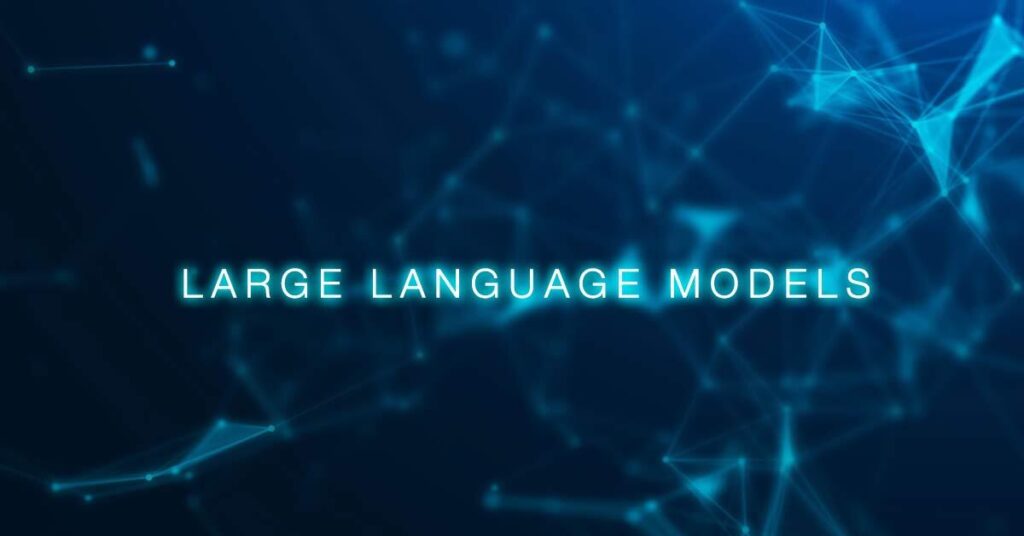CONTACT US
Large Language Models (LLMs) for Enterprises: A Comprehensive Guide to Navigating the New AI Frontier
By: David Hughes (Principal Graph Consultant), Walid Amamou (Founder, UBIAI), Stephen Barr (Guest Contributor)
While Large Language Models (LLMs) have been around for some time, with the recent press around ChatGPT they have come into focus as a critically important topic for organizations looking to leverage AI in tangibly valuable ways. But the importance of LLMs in general reaches far beyond the ChatGPT buzz. In this article and series, we explain this critical capability and also how to use it to unlock the potential of AI in practical ways. Whether you are looking to transform your enterprise, successfully navigate the regulatory landscape, or drive differentiation for your organization to stay ahead, read on.

What are Large Language Models (LLMs)?
The intensifying interest in Large Language Models coincides with the dawn of a new era in artificial intelligence (AI) in general. To understand the LLM meaning, the following definition is large language models explained: An LLM is a neural network, usually with billions of parameters (weights), trained on massive quantities of unlabelled text, leveraging self-supervised learning techniques. If that explanation is still too technical, check out our article What is ChatGPT? for a simplified explanation.
Why are LLMs So Important?
As the field of AI rapidly evolves, LLMs for enterprises are emerging as a powerful, transformative technology that has already begun to revolutionize the way businesses operate. In this blog series, we will take you on a fascinating journey through the history of attention mechanisms and the genesis of LLMs, exploring their transformative impacts and the many possibilities they offer.
We will also show how to effectively implement this technology for the enterprise, while addressing security, confidentiality, and risk concerns. We will also offer valuable insights and practical guidance to help you leverage them to make informed decisions. We also delve into the broader implications of this technology, examining societal reactions and the ongoing regulatory conversations across various sectors, including industry, academia, government- also including global perspectives.
Why Embrace Large Language Models Sooner than Later?
There are good reasons for embracing them sooner than later. Implementing them can give your organization a significant competitive advantage, enabling you to harness the latest AI innovations to differentiate and create competitive advantages.
The rapid advancements in AI and the large language models simply cannot be ignored. Enterprises that fail to embrace this emerging technology risk falling behind in innovation and differentiation. The growing importance of AI solutions in business is undeniable. Investors are increasingly looking for companies that effectively leverage advanced technologies like this.
Now more than ever, leveraging emerging technology is crucial for success. This technology offer new opportunities to accelerate growth, providing enterprises with unique differentiating advantages.
Use Case Examples in This Series
The potential of large language models extends far beyond just improving business efficiency. They also have the capacity to revolutionize entire industries which we will explore in more detail in this series. We will delve into natural language understanding in the context of various use cases in order to showcase their unique potential to provide insights into their real-world applications. Here are some examples of what we will cover:
- In-Context Learning: One of their most powerful capabilities is the ability to understand and generate human-like responses based on a particular context. This has far-reaching implications across various industries, from customer service to content creation. Discover the most impactful applications of in-context learning as we delve into how they can transform your organization’s processes and output.
- Law: The legal industry is no stranger to the impact of AI, and large language models are playing a crucial role in reshaping the sector. From automating contract reviews to enhancing legal research, this technology offers unprecedented opportunities to streamline legal processes and improve outcomes. We will take a deep dive into how AI is shaping the legal industry, featuring detailed pseudo-code examples to demonstrate the power and precision of LLMs in this domain.
Key Concepts
As the potential of large language models becomes increasingly apparent, it’s essential to understand in what ways natural language is structured data, as well to understand the core concepts that drive their effectiveness and versatility. Over time in this series, we will explore the following fundamental ideas, equipping you with the knowledge needed to make the most of them within your organization:
- Democratizing AI: By making AI applications accessible through natural language, LLMs have made and will make AI more accessible than ever before, enabling organizations of all sizes to harness their power. We will delve into the process of making them accessible and tailored to enterprise requirements, ensuring that businesses can leverage AI-driven solutions to meet their unique objectives.
- Harnessing the Power of Your Data: One of the most significant benefits of LLMs is their ability to unlock new insights in truly unique ways from your organization’s data. We will explore how they can be used to analyze vast amounts of information, identifying patterns and trends that can inform strategic decision-making and drive business success.
- Emerging Fine-Tuning Techniques: As this technology continues to evolve, so too do the techniques used to optimize their performance. We will investigate the latest fine-tuning methods, such as leveraging embeddings for large document collections, which enable them to deliver even more accurate and contextually relevant results.
Societal and Regulatory Perspectives: Understanding the Impact of LLMs
As the adoption of large language models continues to grow, it is crucial to consider the broader societal and regulatory implications of these powerful AI capabilities. In this series we will also explore diverse perspectives on LLMs AI and their impact, providing a comprehensive understanding of the challenges and opportunities they present. Some examples of what we will cover include:
- Industry, Academic, Government, Global, and Societal Views: To fully appreciate the potential of LLMs, it is essential to consider the diverse viewpoints from the various stakeholders. We will examine the perspectives of industry leaders, academic researchers, government officials, and global institutions, as well as the wider societal views on them and their role in shaping the future.
- Navigating the Regulatory Landscape: The rapid advancement of LLMs presents both opportunities and challenges in terms of regulation. We will explore the delicate balance between fostering innovation and ensuring responsible AI deployment, providing insights into the current regulatory landscape and its implications for enterprises adopting this technology.
- Examining the Societal Implications: As AI becomes increasingly integrated into our lives, it is vital to address the associated ethical concerns and societal implications. We will delve into the ongoing public discourse surrounding these powerful AI capabilities, discussing topics such as fairness, transparency, and privacy, while also exploring strategies to mitigate potential risks and ensure the responsible development and deployment of LLMs.
Conclusion: Embracing the Future of Large Language Models
Large language models hold tremendous potential to transform businesses and industries, while also presenting new challenges and considerations in the realms of ethics, regulation, and societal impact. The road ahead is undoubtedly filled with both opportunities and challenges, but understanding the core concepts, use cases, and broader implications of LLMs AI is crucial for staying ahead in the rapidly evolving AI landscape.
In the coming weeks and months, we will continue to delve into the fascinating world of large language models, providing valuable insights, practical guidance, and thought-provoking discussions on a range of topics. Our goal is to equip you with the knowledge and understanding needed to make informed decisions, responsibly harness the power of LLMs, and ultimately drive your organization’s success.
As we embark on this exciting journey together, we encourage you to stay engaged, share your thoughts and experiences, and contribute to the ongoing conversation surrounding LLMs and their impact on the world. With a curious and open-minded approach, we can collectively unlock their full potential and shape a future where AI serves as a powerful force for innovation, progress, and positive change.
Check out a powerful new natural language interface to your graph database / knowledge graph that enables your non-technical users to ask natural language questions right to the database itself.
Related Articles
- AI in Drug Discovery – Harnessing the Power of LLMs
- AI consulting guidebook
- What is ChatGPT? A Complete Explanation
- Domo custom apps using Domo DDX Bricks with the assistance of ChatPGT
- Resolution for various ChatGPT errors, including ChatGPT Internal Server Error
- Understanding Large Language Models (LLMs)
- What are Graph Algorithms?
- What is Neo4j Graph Data Science?
- What is ChatGPT? A Complete Explanation
- ChatGPT for Analytics: Getting Access & 6 Valuable Use Cases
- What is Prompt Engineering? Unlock the value of LLMs
- LLM Pipelines / Graph Data Science Pipelines / Data Science Pipeline Steps
- Using a Named Entity Recognition LLM in a Biomechanics Use Case
- What is Databricks? For data warehousing, data engineering, and data science
- Databricks Architecture – A Clear and Concise Explanation
- Databricks vs Snowflake compared
- What is Databricks Dolly 2.0 LLM?



